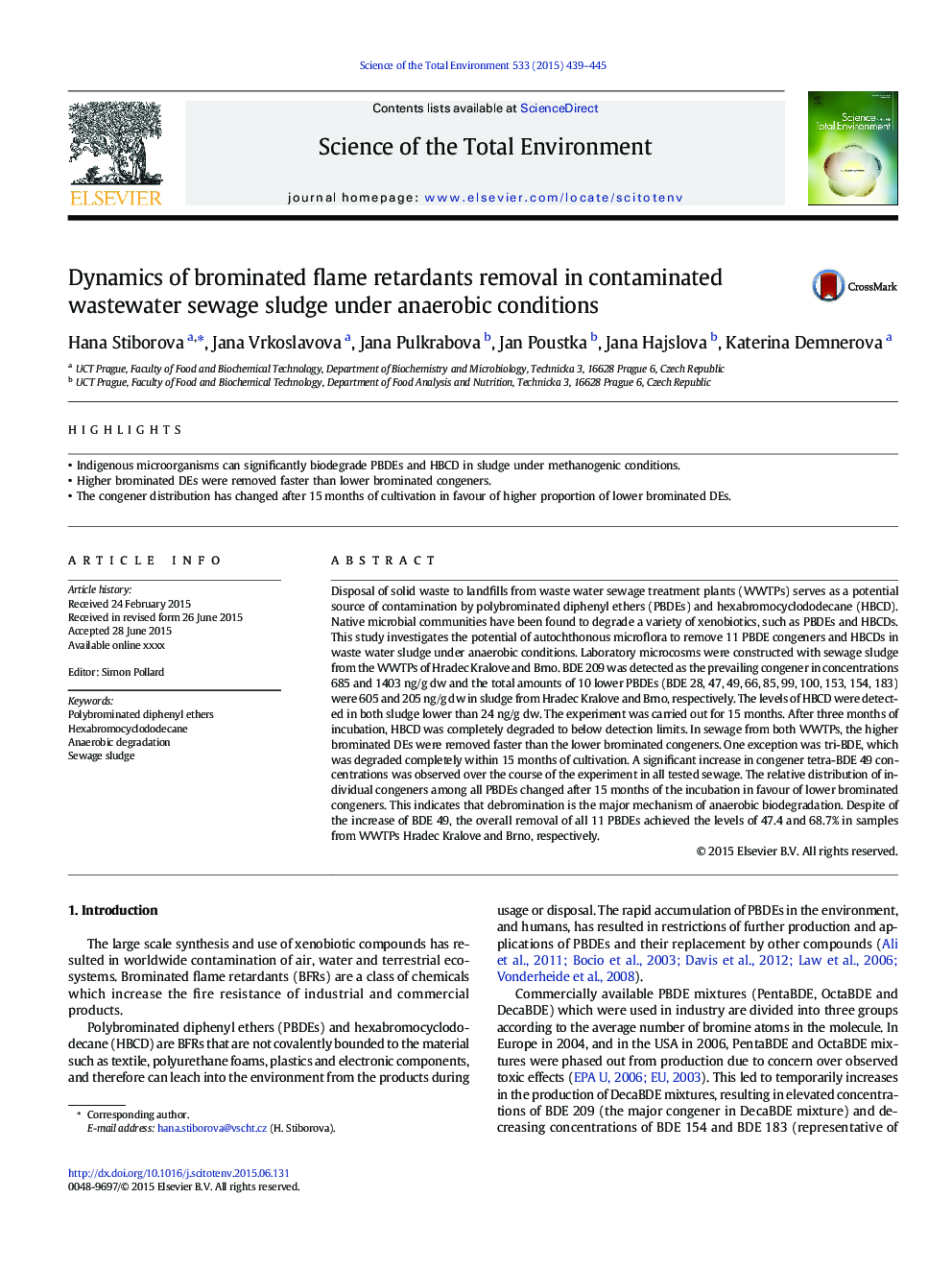| کد مقاله | کد نشریه | سال انتشار | مقاله انگلیسی | نسخه تمام متن |
|---|---|---|---|---|
| 6326291 | 1619751 | 2015 | 7 صفحه PDF | دانلود رایگان |
عنوان انگلیسی مقاله ISI
Dynamics of brominated flame retardants removal in contaminated wastewater sewage sludge under anaerobic conditions
ترجمه فارسی عنوان
دینامیک برداشتن بازدارنده های شعله برومند در لجن فاضلاب آلوده در شرایط بی هوازی
دانلود مقاله + سفارش ترجمه
دانلود مقاله ISI انگلیسی
رایگان برای ایرانیان
کلمات کلیدی
اسیدهای دی فنیل پلیبرومینید، هگزابرومیکسیودیدکائین، تجزیه بی هوازی، لجن فاضلاب،
موضوعات مرتبط
علوم زیستی و بیوفناوری
علوم محیط زیست
شیمی زیست محیطی
چکیده انگلیسی
Disposal of solid waste to landfills from waste water sewage treatment plants (WWTPs) serves as a potential source of contamination by polybrominated diphenyl ethers (PBDEs) and hexabromocyclododecane (HBCD). Native microbial communities have been found to degrade a variety of xenobiotics, such as PBDEs and HBCDs. This study investigates the potential of autochthonous microflora to remove 11 PBDE congeners and HBCDs in waste water sludge under anaerobic conditions. Laboratory microcosms were constructed with sewage sludge from the WWTPs of Hradec Kralove and Brno. BDE 209 was detected as the prevailing congener in concentrations 685 and 1403 ng/g dw and the total amounts of 10 lower PBDEs (BDE 28, 47, 49, 66, 85, 99, 100, 153, 154, 183) were 605 and 205 ng/g dw in sludge from Hradec Kralove and Brno, respectively. The levels of HBCD were detected in both sludge lower than 24 ng/g dw. The experiment was carried out for 15 months. After three months of incubation, HBCD was completely degraded to below detection limits. In sewage from both WWTPs, the higher brominated DEs were removed faster than the lower brominated congeners. One exception was tri-BDE, which was degraded completely within 15 months of cultivation. A significant increase in congener tetra-BDE 49 concentrations was observed over the course of the experiment in all tested sewage. The relative distribution of individual congeners among all PBDEs changed after 15 months of the incubation in favour of lower brominated congeners. This indicates that debromination is the major mechanism of anaerobic biodegradation. Despite of the increase of BDE 49, the overall removal of all 11 PBDEs achieved the levels of 47.4 and 68.7% in samples from WWTPs Hradec Kralove and Brno, respectively.
ناشر
Database: Elsevier - ScienceDirect (ساینس دایرکت)
Journal: Science of The Total Environment - Volume 533, 15 November 2015, Pages 439-445
Journal: Science of The Total Environment - Volume 533, 15 November 2015, Pages 439-445
نویسندگان
Hana Stiborova, Jana Vrkoslavova, Jana Pulkrabova, Jan Poustka, Jana Hajslova, Katerina Demnerova,
